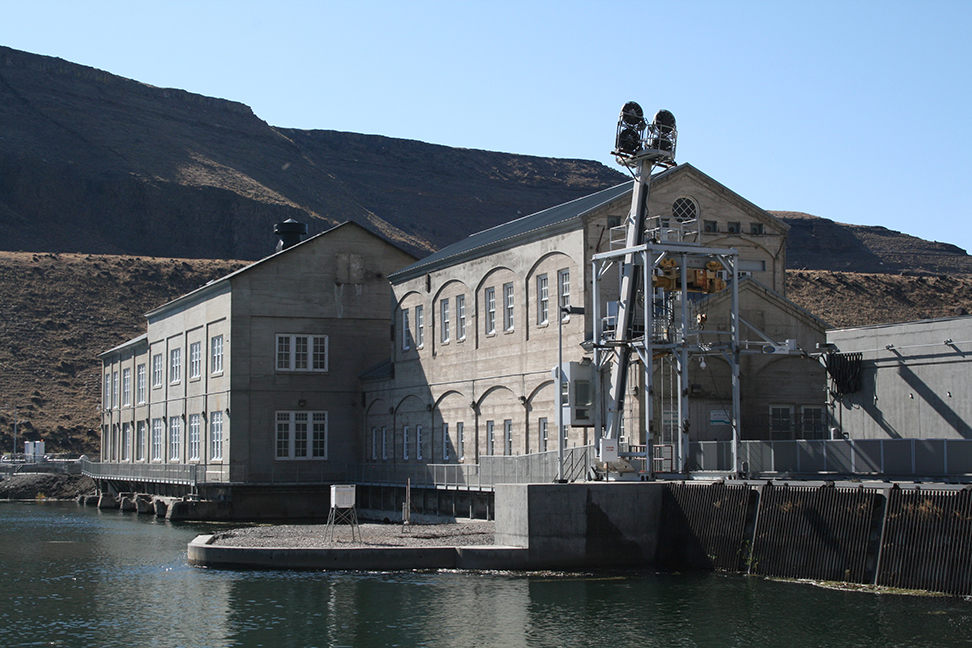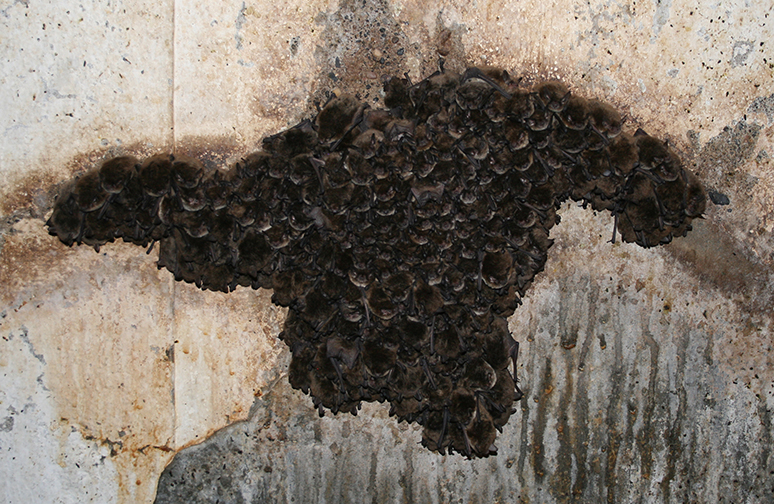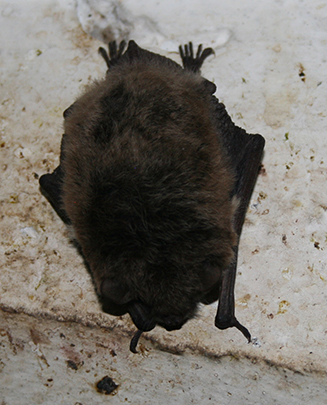By Casey Pozzanghera, Regional Wildlife Biologist
The area surrounding southwestern Idaho’s Swan Falls Dam is home to many natural wonders. Smallmouth bass, catfish, and sturgeon fill the river, ducks and geese flock to the sandbars, mule deer and black-tailed jackrabbits feed in the sagebrush-covered shoreline, and golden eagles nest high on the rugged cliff walls. With all of these attractions, it’s no surprise that so few people know that the Snake River’s oldest hydroelectric dam is itself home to one of the most unique natural phenomena in Idaho.

Each spring, approximately 2,000 adult female Yuma Myotis bats congregate in the dark chambers of the concrete dam to give birth and rear their young in what is known as a maternity colony. This is the largest known maternity colony of bats in Idaho, and possibly one of the best kept natural secrets in the state. The Yuma Myotis is one of 14 bat species found in Idaho, and although their range extends throughout the state, very little is known about these important animals. The Idaho Department of Fish and Game (IDFG) is working closely with Idaho Power to monitor the colony at Swan Falls Dam, which will help improve our understanding of bat ecology and help ensure the health of bats in Idaho.

In 2019, IDFG set out to gather new information about the timing of bat activity at the dam. The colony’s daily routine is well documented. These bats emerge nightly to drink, feed on insects, and stretch their wings, but their seasonal movements are currently not well understood. With the help of automated acoustic monitors, biologists can monitor bat activity in the dam by recording bat calls to determine when the animals leave in the fall, when they arrive in the spring, and whether there is any activity at the dam during the winter months.

This monitoring is particularly important for early detection of disease outbreaks, specifically white-nose syndrome (WNS). WNS is a fatal fungal disease that has killed millions of bats across North America, and unusual bat activity near a maternity colony during winter has been shown to be an indicator of a potential WNS outbreak. WNS (or the fungus that causes the disease) has been identified in two neighboring states (Washington and Wyoming), but to date there has been no indication that the deadly fungus has arrived in Idaho. To remain proactive in the fight against WNS, IDFG is also collaborating with the USGS National Wildlife Health Center to collect environmental and biological samples within maternity colonies and winter hibernacula (winter roost sites) to continue to test for the WNS-causing fungus. These efforts are critical to ensure Idaho can sustain healthy populations of bats into the future, and colonies like the one at Swan Falls Dam can remain one of the true natural gems in the gem state.
Here's a list of bats found in Idaho...

There's a bat in my house! What do I do?
https://idfg.idaho.gov/blog/2017/06/i-found-bat-my-home-what-do-i-do

